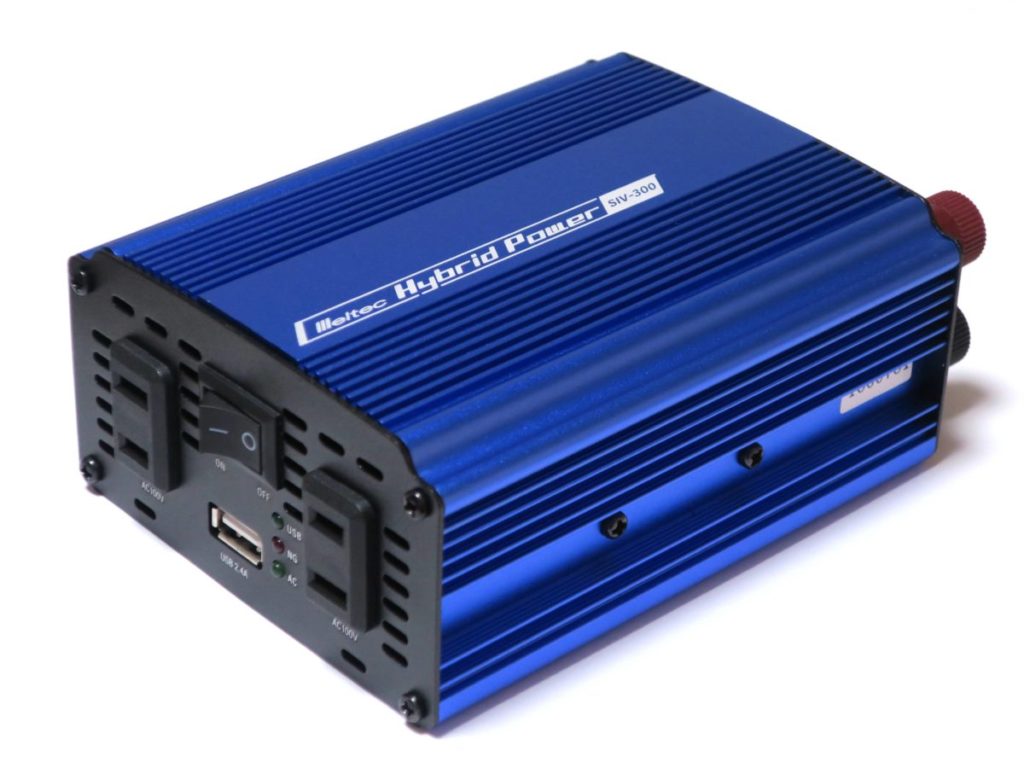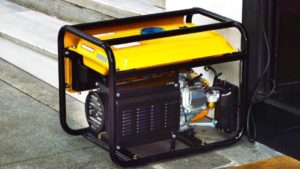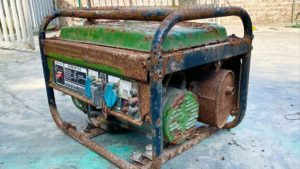As energy efficiency continues to be a top priority for homes and businesses, one often overlooked yet powerful tool is the inverter.
This innovative device can significantly optimize your energy consumption by converting DC power from solar panels or wind turbines into AC power that can run your appliances and lighting.
By understanding how to use an inverter to its full potential, you can unlock tremendous savings on your electricity bills while reducing your carbon footprint.
We will explore the key features and benefits of inverters, as well as provide actionable tips on how to maximize their energy efficiency.
Choose the right inverter size
Select an inverter that matches your power requirements to ensure optimal efficiency. Oversizing the inverter can lead to energy wastage and reduce its lifespan.
Oversizing the inverter can lead to energy wastage and reduce its lifespan, while undersizing it can result in reduced performance and shorter battery life.
To determine the appropriate inverter size, consider your daily energy usage, the number of appliances you want to power, and the amount of sunlight or wind your location receives.
Consult with a professional to ensure that the inverter size you select is compatible with your solar panels or wind turbine.
With the right inverter size, you can optimize your energy production, minimize energy loss, and extend the lifespan of your renewable energy system.
Adjust the output voltage
Most inverters allow you to adjust the output voltage to match your load requirements. Reducing the output voltage can help improve efficiency and reduce heat generation.
Adjusting the output voltage on your inverter is a simple yet effective way to improve efficiency and reduce heat generation.
The output voltage of an inverter is the voltage that is produced by the inverter and sent to the load, such as a motor or a lighting circuit.
Most inverters allow you to adjust the output voltage to match your load requirements, and reducing the output voltage can have several benefits.
For example, if you are using a high-power motor, you may need a higher output voltage to ensure proper operation.
However, if you are using a low-power load, such as a lighting circuit, you may be able to reduce the output voltage and still achieve the desired performance.
Reducing the output voltage can help improve efficiency because the inverter does not have to work as hard to produce the voltage, which can lead to a decrease in heat generation.
Reducing the output voltage can help extend the life of your inverter and other components in your system.
To adjust the output voltage on your inverter, you will typically need to consult the manufacturer’s instructions or the inverter’s display screen.
Some inverters may have a simple voltage adjustment switch or dial, while others may require more detailed settings and configurations.
It is important to carefully follow the manufacturer’s instructions when adjusting the output voltage to avoid damaging your inverter or other system components.
Monitor and control the temperature
Inverters generate heat during operation, so it’s essential to monitor and control the temperature to ensure efficient performance. Overheating can lead to reduced lifespan and decreased efficiency.
Inverters are vital components in renewable energy systems, such as solar and wind power, and their proper operation is important for maintaining efficient performance.
One of the critical factors affecting inverter performance is temperature.
Inverters generate heat during operation, especially during periods of high demand or low temperatures.
If the temperature of the inverter is not properly monitored and controlled, it can lead to reduced lifespan and decreased efficiency.
Overheating can cause the inverter’s components to degrade prematurely, leading to reduced power output and decreased system efficiency.
High temperatures can cause the inverter to enter a reduced power output mode, which can further reduce the system’s overall performance.
To mitigate these issues, it is essential to monitor and control the temperature of the inverter.
This can be done using temperature sensors and alarms to alert operators of any potential overheating issues.
Some inverters have built-in temperature control features that can reduce the load on the inverter during periods of high demand or low temperatures.
By properly monitoring and controlling the temperature of the inverter, operators can ensure efficient performance, extend the lifespan of the components, and reduce the risk of costly repairs or replacements.
Use a high-quality inverter
Investing in a high-quality inverter can provide long-term benefits through improved efficiency and longevity. Look for an inverter with a high efficiency rating, low standby power consumption, and a reputable brand.
When it comes to investing in a solar power system, using a high-quality inverter is a important decision that can provide long-term benefits.
A high-efficiency inverter can significantly improve the overall efficiency of your system, reducing energy losses and maximizing the power output.
Look for an inverter with a high efficiency rating, typically above 95%, which can help you save more money on your energy bills.
An inverter with low standby power consumption can minimize unnecessary energy usage, reducing your carbon footprint and saving you more money.
Moreover, choosing a reputable brand for your inverter is essential.
A well-established brand can provide reliable and durable equipment that can withstand harsh weather conditions and last for many years.
Some of the top-rated brands in the industry include SMA, Schneider Electric, and SolarEdge.
These brands offer high-quality inverters that come with excellent warranties and customer support.
By investing in a high-quality inverter, you can not only ensure a more efficient and reliable solar power system but also enjoy long-term benefits such as lower maintenance costs and increased property value.
So, make sure to do your research and choose the best inverter for your solar power needs.
Install the inverter correctly
Proper installation of the inverter is important to ensure optimal performance and efficiency. Make sure the inverter is installed in a well-ventilated area, and all cables and connections are secure and correct.
To ensure optimal performance and efficiency, it is important to install the inverter correctly.
The inverter should be installed in a well-ventilated area to prevent overheating, which can lead to reduced efficiency and a shorter lifespan.
All cables and connections must be secure and correct to prevent any loose connections or short circuits that can damage the inverter or cause safety hazards.
Proper installation also includes ensuring that the inverter is level and stable, and that all necessary mounting hardware is used.
It is important to follow the manufacturer’s instructions and recommendations for installation, as different models may have specific requirements for optimal performance.
Use energy-saving features
Many modern inverters come with energy-saving features such as smart energy management, load control, and power-saving modes. Use these features to optimize energy consumption and reduce waste.
To optimize energy consumption and reduce waste, it’s essential to use the energy-saving features available in your modern inverter.
Smart energy management systems allow you to monitor and control your energy usage in real-time, ensuring that you’re getting the most out of your solar panels.
Load control features allow you to prioritize your energy usage, so you can power your most critical appliances during peak energy-usage times.
Power-saving modes can automatically adjust your energy consumption to match your usage patterns, ensuring that you’re always using the most energy-efficient settings.
By utilizing these features, you can significantly reduce your energy waste and maximize the benefits of your solar panel investment.
Regularly maintain and clean the inverter
Regular maintenance and cleaning of the inverter can help improve efficiency and extend its lifespan. Dust and dirt can accumulate on the inverter’s components, reducing its performance and efficiency.
Regular maintenance and cleaning of the inverter is important to ensure optimal performance and extend its lifespan.
The inverter’s components, such as the solar panels and the charge controller, can accumulate dust and dirt over time, which can reduce the inverter’s efficiency and performance.
For example, if the solar panels are covered in dust and dirt, they may not be able to absorb as much sunlight, which can result in lower energy production.
Similarly, if the charge controller is clogged with dirt and debris, it may not be able to regulate the flow of energy properly, leading to reduced battery health and performance.
To maintain and clean the inverter, it is recommended to clean the solar panels and the charge controller regularly with a soft cloth and a mild detergent solution.
This will help to remove any dust and dirt that may have accumulated on the surfaces, ensuring that the inverter operates at its full potential.
It is important to regularly check the inverter’s wiring and connections to ensure that they are secure and not damaged, as any damage or wear can affect the inverter’s performance and lifespan.
Optimize the charge controller setting
The charge controller setting plays a important role in maximizing energy efficiency. Adjust the setting to optimize the charging and discharging of your battery bank, ensuring efficient energy consumption and minimal energy loss.
Optimizing the charge controller setting is important to maximizing energy efficiency in your solar-powered off-grid system.
The charge controller regulates the flow of energy between the solar panels and the battery bank, and setting it up properly can make a significant difference in your energy consumption.
To optimize the charging and discharging of your battery bank, follow these steps
Monitor the battery state of charge (SOC) and adjust the charge controller setting accordingly.
This ensures that your batteries are neither overcharged nor undercharged, which can lead to reduced lifespan and efficiency.
Set the charging voltage and current to the appropriate levels for your battery type.
Overvoltage or overcurrent can cause damage to the batteries and reduce their lifespan.
Adjust the pulse width modulation (PWM) ratio to optimize the charging and discharging of your batteries.
A higher PWM ratio will allow for faster charging and discharging, but may also increase energy loss.
Set the overcharge protection to prevent overcharging of the batteries.
This feature is especially important if you have a lead-acid battery bank, as overcharging can cause sulfation and reduce the lifespan of the batteries.
Enable the low-voltage disconnect (LVD) function to prevent deep discharging of the batteries.
This feature will automatically disconnect the solar panel from the battery bank when the voltage drops below a certain threshold, preventing damage to the batteries.
Remember to regularly monitor and adjust the charge controller setting as needed to maintain optimal performance.]]]
To optimize the charging and discharging of your battery bank in your solar-powered off-grid system, it is essential to adjust the charge controller setting appropriately.
The charge controller setting plays a important role in maximizing energy efficiency, as it regulates the flow of energy between the solar panels and the batteries.
A higher PWM (Pulse Width Modulation) ratio will enable faster charging and discharging, but it may also increase energy loss.
Therefore, it is important to strike a balance between charging speed and energy loss.
Moreover, setting the overcharge protection feature is essential to prevent overcharging of the batteries, particularly if you have a lead-acid battery bank.
Overcharging can cause sulfation, which reduces the lifespan of the batteries.
Therefore, it is important to ensure that the overcharge protection feature is enabled to prevent any damage to the batteries.
Setting the low voltage cutoff feature can ensure that the solar panel voltage does not drop too low during discharge, which can prevent damage to the solar panels.
By adjusting the charge controller setting appropriately, you can maximize the energy efficiency of your solar-powered off-grid system, extend the lifespan of your battery bank, and minimize energy loss.
Want More? Dive Deeper Here!
Hey there! If you’re the type who loves going down the rabbit hole of information (like we do), you’re in the right spot. We’ve pulled together some cool reads and resources that dive a bit deeper into the stuff we chat about on our site. Whether you’re just killing time or super into the topic, these picks might just be what you’re looking for. Happy reading!






